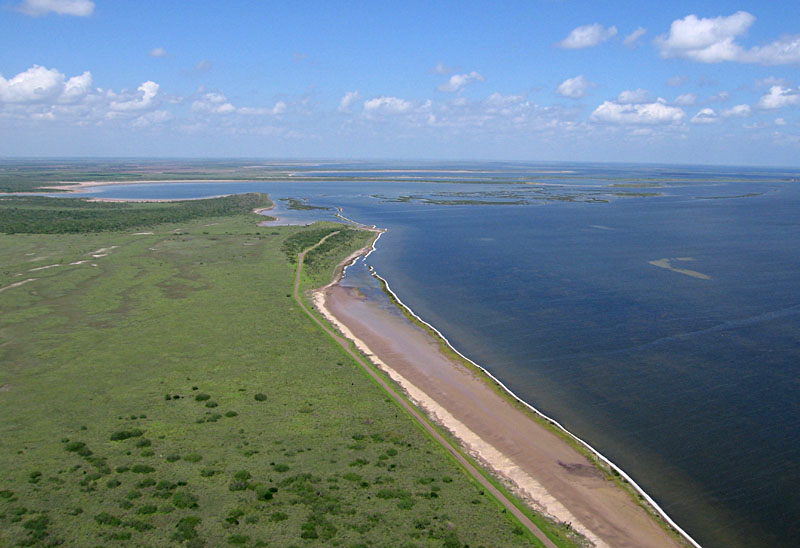
A DST is an informative tool aimed at aiding in the creation of EBM strategies for freshwater inflows which integrates historic and current information, uses the cooperation of multiple agencies, provides studies used to determine freshwater requirements in estuaries of the Gulf of Mexico, considers policy and public outreach, and is a plan of how to implement the strategy.
The purpose of this project was to integrate data previously collected along the Texas Coast (see below tables) and use the information to create a web-based DST for the management of freshwater inflow to estuaries. The sources of previously collected data are listed in the table below.
Existing long-term observation data networks for the Texas coast. A) Agencies and observing networks, and B) data available.
| A. Identity | Source |
|---|---|
| HRI | Harte Research Institute, Texas A&M University-Corpus Christi (TAMUCC) |
| NASA | National Aeronautics and Space Administration |
| NOAA | National Oceanic and Atmospheric Administration |
| TCOON | Texas Coastal Ocean Observing Network, TAMUCC |
| TCEQ | Texas Commission on Environmental Quality |
| TGLO | Texas General Land Office |
| TNRIS | Texas Natural Resource Inventory |
| TPWD | Texas Parks and Wildlife Department |
| TWDB | Texas Water Development Board |
| USEPA | U.S. Environmental Protection Agency |
| USGS | U.S. Geological Survey |
| B. Category | Data | Sources |
|---|---|---|
| Hydrology | Rain, runoff, gauged, returns, evaporation, diversions | TWDB, USGS |
| Water Quality | Salinity, temperature, dissolved oxygen, nutrients, chlorophyll | HRI, TCEQ, TPWD, USEPA |
| Habitats | Area, geo-referenced locations | TGLO, NOAA, USGS |
| Watersheds | Locations, water quality | TCEQ, USEPA |
| Remote Sensing | Satellite imagery | NASA, NOAA |
| Biological | Fish, epifauna, infauna, juveniles, oysters | HRI, TPWD |
| Socioeconomic | Population, land use, economic | HRI, NOAA, TNRIS |